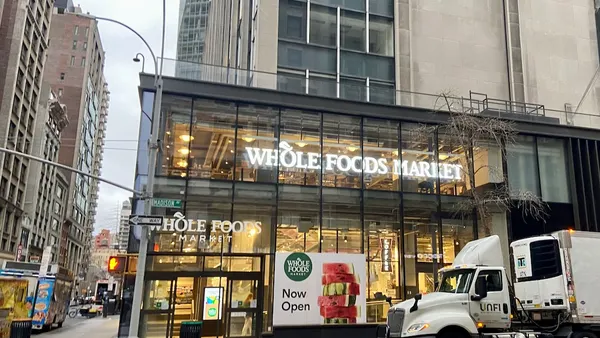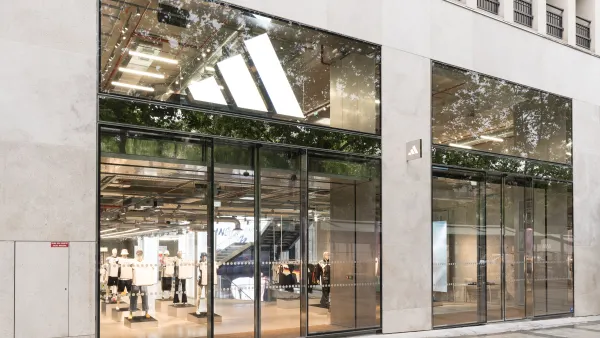Dive Brief:
-
About two weeks before Amazon and Whole Foods made their merger agreement public, Amazon pressed the grocer to make a quick decision on a bid that was $3 per share below what Whole Foods asked for, according to a proxy statement filed with the Securities and Exchange Commission. Adding to its pressure on Whole Foods, Amazon also threatened to walk away from negotiations if the grocer approached other interested buyers — of which there were several — before giving Amazon an answer.
-
The merger agreement between Amazon and Whole Foods came shortly after activist investor Jana Partners on April 10 disclosed an 8.8% stake in the organic grocer. On April 18, a grocery rival dubbed “Company X” (which sources have told Reuters refers to Albertson’s) expressed interest in a partnership. Between April 20 and May 4, the grocer then fielded interest from four private equity firms. Another rival, “Company Y,” also expressed interest in a partnership with Whole Foods, according to the SEC filing.
-
After Whole Foods initially reached out to Amazon, the e-commerce giant on June 1 responded to Whole Foods’ request for $45 per share with a final offer of $42 per share. Amazon representatives requested a prompt yes or no and said that Amazon would pull out of the buyout talks if Whole Foods approached other suitors before giving an answer, according to the proxy statement.
Dive Insight:
In June, Whole Foods founder John Mackey called private equity firm Jana “greedy bastards” in an interview with Texas Monthly, in which he described his company's battle with activist investors as part of a broader "morality play between conscious capitalism and greedy, short-term financial capitalism."
In the end, Jana would get its payoff through a buyout rather than reorganization of Whole Foods, as the grocer took Amazon’s final offer and announced the merger plans on June 16, an all-cash transaction valued at approximately $13.7 billion.
The merger has since shaken the grocery retail world, putting rivals on notice. “Amazon is known to scale experiments very quickly," Michelle Grant, head of retailing at Euromonitor, wrote to Retail Dive in an email, adding, "It remains to be seen what Amazon’s growth plans will be for Whole Foods."
Whole Foods and Amazon each stand to benefit from a tie-up, starting with the fact that many of their customers already overlap: 71.5% of all Whole Foods shoppers also shop at Amazon and 58.4% are Amazon Prime members, according to research from GlobalData Retail emailed to Retail Dive.
Meanwhile, Amazon's tech prowess could finally address Whole Foods' pricing problems, which it has grappled with to little avail, according to GlobalData Retail's report, which noted that 78.5% of consumers say they don't shop at Whole Foods because prices are too steep. Whole Foods, meanwhile, could help Amazon grow its decade-long grocery effort, exposing it to more markets and providing a nationwide physical presence.
But it's not an easy path for Amazon by any means. Most Whole Foods customers have at least one concern about an Amazon takeover, including food quality and ethics. Fewer than a quarter of consumers it surveyed told GlobalData Retail they have no concerns. "Main Whole Foods shoppers were fairly negative, with almost 43% saying they thought the deal was a bad thing," GlobalData Retail said in its report. "The finding underlines the fact Amazon will have to tread carefully as it makes changes at Whole Foods."














